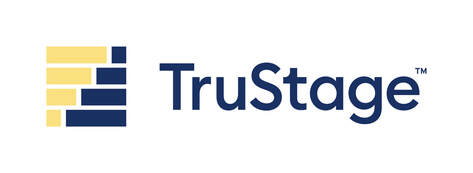|
by Emily Nadboralski, Director of Data & Analytics, and Vicki Potter, Analytics Consultant, TruStage
In an era dominated by digital advancements, the credit union industry may face a new and intricate battle against predatory lending. Drawing insights from actual credit union data, our goal is to shed light on the specific segments of members who are most susceptible to these lenders. Once credit unions know which members are most vulnerable, they could intervene with tailored product offerings designed to help prevent members from entering a payday lender cycle. The surge of digital predatory lending without regulation. The digital revolution is one of the causes of a surge in predatory lending. It has helped to create an environment where certain lenders might take advantage of gaps in regulation and consumer understanding. Practices such as high-interest payday loans, terms that could be confusing, and fees that aren't immediately apparent are among the methods employed by these lenders to attract borrowers. As an example, the annual percentage rate (APR) of a typical two-week payday loan with a $15 fee per $100 borrowed is 391%. The situation has become so severe that some U.S. states have enacted a 36% interest rate cap for payday lenders and 12 states have banned them altogether. Payday lenders have expressed concern that the cap will not permit them to continue conducting business in Minnesota, as an example, which they claim will encourage prospective borrowers to pursue loans via unregulated online marketplaces. However, research indicates a substantial decrease in payday loans and borrowers pursuing online loans within regulated states. Additionally, more than 80% of borrowers have expressed they would be more cautious with their expenses if payday loans weren’t available. Even with regulation in place, the magnitude of existing and estimated future payday lending growth is still prevalent. In 2021, the Payday Loans market had an estimated worth of approximately $33.5B and this is projected to increase to $42.6B by 2028. Shedding light on vulnerable segments. With the shift to the digital realm, payday loan providers can now greatly expand their outreach, encompassing a wider range of consumers. It is more probable that low-income households and communities of color will be targeted by payday lenders.2 Vulnerable members may choose a payday loan over their credit union because they may feel embarrassed displaying their current financial situation. Beyond the emotional strain, members may turn to digital payday lenders because they feel it's their only option. Thankfully, data has emerged as a powerful tool in the fight against predatory lending. By leveraging data analytics and technology, credit unions can gain valuable insights into their members' financial behaviors, helping enable them to identify signs of susceptibility to predatory lending and take proactive measures. Strategies for supporting vulnerable members. Credit unions can proactively identify members who could benefit from support by collaborating with them when they seek assistance. They can also explore opportunities by examining Automated Clearing House (ACH) deposits from payday lenders into members' accounts, with the members' consent. This isn't always one large deposit; it can be small deposits from multiple payday lenders. Once identified, credit unions can extend a helping hand by offering to help pay off the loans and get members into better financial security. Through this approach, credit unions achieve two benefits. First, by helping members improve their financial situation, they may cultivate a sense of loyalty among members who develop a strong trust in their credit union. Second, they may enhance their earnings through increased interest generated by loan repayment products. The path forward. The digital transformation of the lending landscape has great benefits, but it has also opened the door to predatory lending practices. Credit unions, with their member-centric approach, are well-positioned to leverage data to help protect their members from falling victim to predatory loans. By harnessing the power of data, credit unions may help identify signs of predatory lending and take proactive steps to educate, intervene and offer dignified financial services with members’ best interest in mind. TruStage, formerly CUNA Mutual Group, is DakCU’s System Partner. TruStage is a financially strong insurance, investment and technology provider, built on the philosophy of people helping people. We believe a brighter financial future should be accessible to everyone, and our products and solutions help people confidently make financial decisions that work for them at every stage of life. With a culture rooted and focused on creating a more equitable society and financial system, we are deeply committed to giving back to our communities to improve the lives of those we serve. For more information, visit trustage.com or contact George McDonald, DakCU’s Chief Officer of Strategic Services. Comments are closed.
|
The MemoThe Memo is DakCU's newsletter that keeps Want the Memo delivered straight to your inbox?
Archives
July 2024
Categories
All
|
|
Copyright Dakota Credit Union Association. All Rights Reserved.
2005 N Kavaney Dr - Suite 201 | Bismarck, North Dakota 58501 Phone: 800-279-6328 | [email protected] | sitemap | privacy policy |






